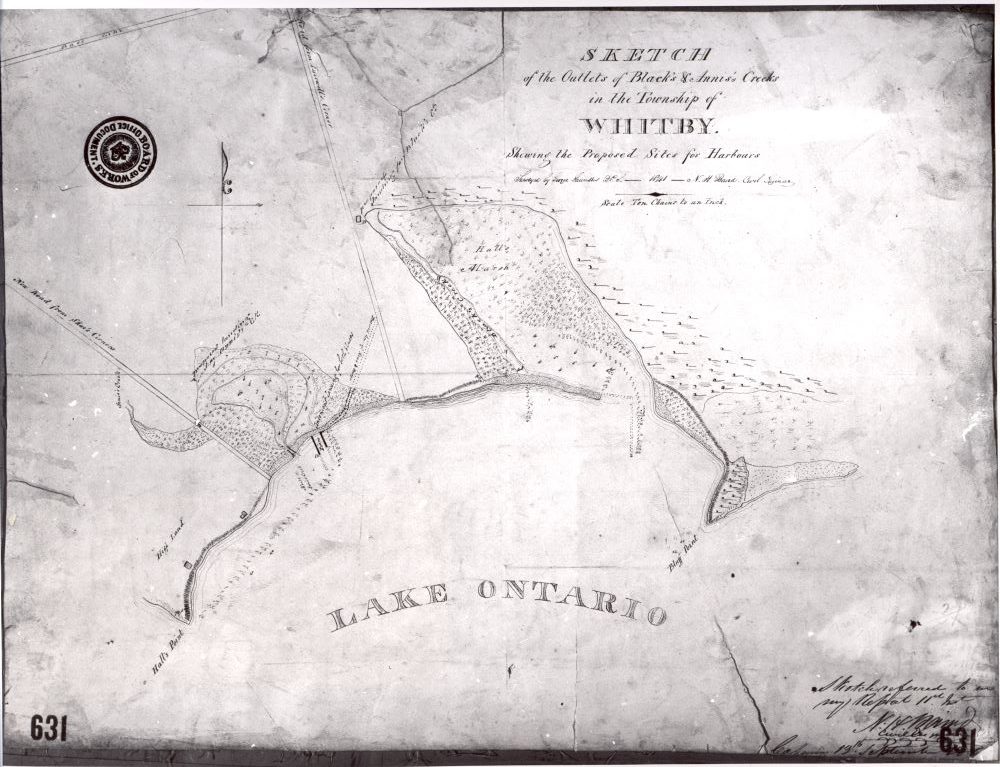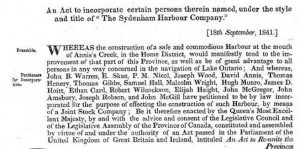The First Harbour Company
A very busy and thriving neighbourhood the harbour must have been in the middle decades of the last century, when the Lake was the principal highway, when a great part of what was brought in, as well as most of what was sent out, came to the wharf, when the Guys and the Conants, Mothersills and the Henrys made their homes there, as well as many others. There was a large across-the-lake trade bringing Oswego and Rochester and Buffalo to our gate with their merchandise and generally taking back a load of ours, and a relatively large coastwise trade as far as Kingston.
– Dr. Hoig, Reminiscences and Recollections, 1933

Sketch of the outlets of Black’s and Annis Creeks showing the proposed harbour in the Township of Whitby, 1841.
The natural bay, located where today’s Oshawa Creek and Farewell Creek meet at the mouth of Lake Ontario, would develop from a marshy inlet to the first harbour company. Formed in 1841, it was named the Sydenham Harbour Company, after Lord Sydenham, who was the Governor General of the Province of Canada from 1839 to 1841.

Act to incorporate a harbour at the mouth of Annis’s Creek, today’s Oshawa Creek, named The Sydenham Harbour Company. September 8, 1841.
The Sydenham Harbour Company was responsible for the development of the harbour and its facilities. Before 1841, there were no piers or wharves at the harbour. David Annis and Daniel Conant, ran the area’s first business and needed the development of the harbour to carry out their lumber and shipping business more efficiently. These two individuals with several others in January 1841, decided to form a company and petition Parliament for a charter. David Annis and Daniel Conant, asked others residing in the harbour area to become shareholders in a joint stock company for erecting a wharf.
A small pier and breakwater provided sheltered anchorage and access to shipping routes to other established ports on both sides of Lake Ontario. One of the chief exports was the flour being produced by local mills, as well as lumber produced by clearing the forests to the north.
Exports from the Port of Oshawa in 1844 were: Flour 18,690 barrels; Pork 599 barrels; Ashes 544 barrels; Oatmeal 819 barrels; Whiskey 377 barrels; Wheat 11,314 bushels; Oats 2,715 bushels; Grass seed 148 bushels; Potatoes 521 bushels; Lumber 145 000 feet.

